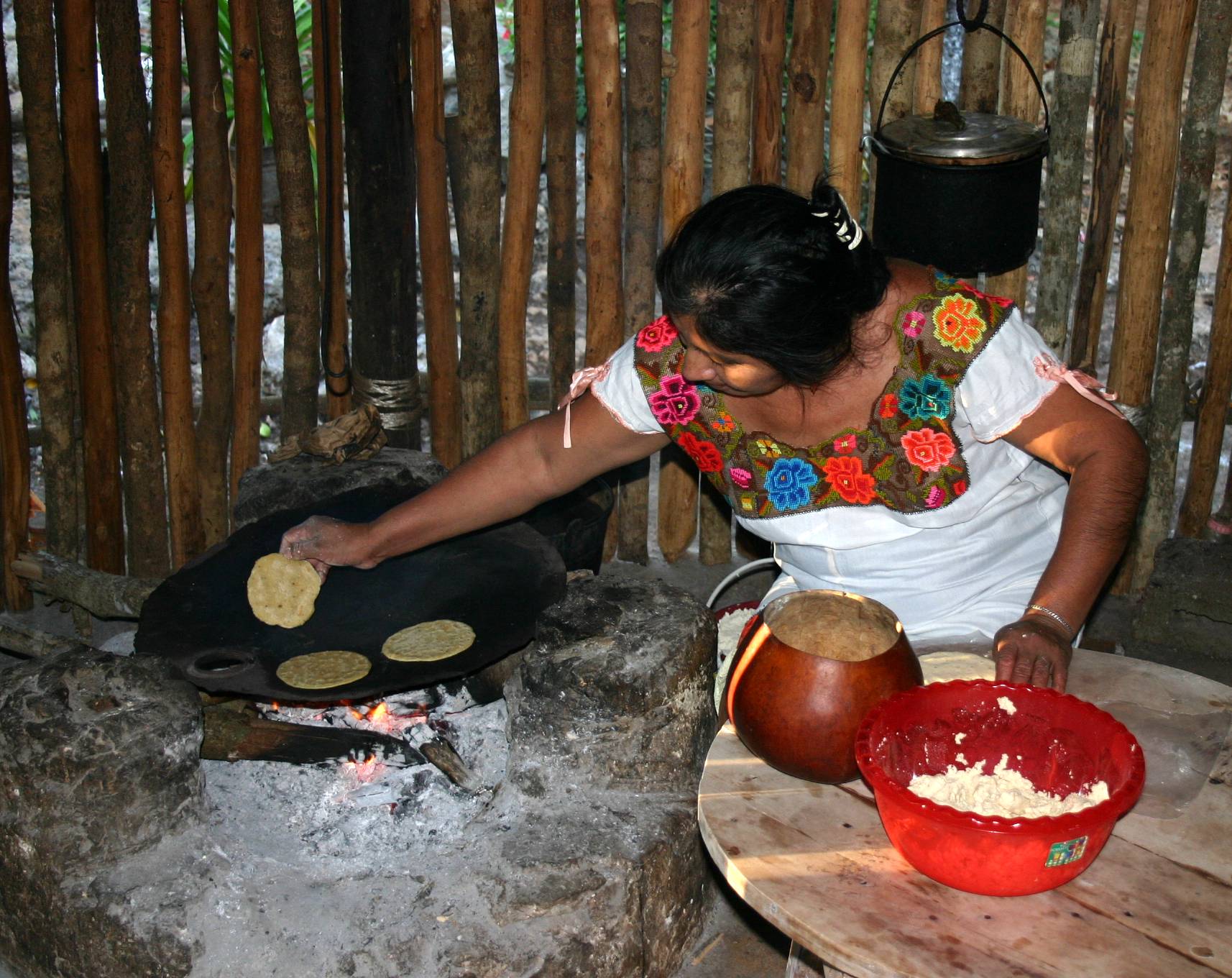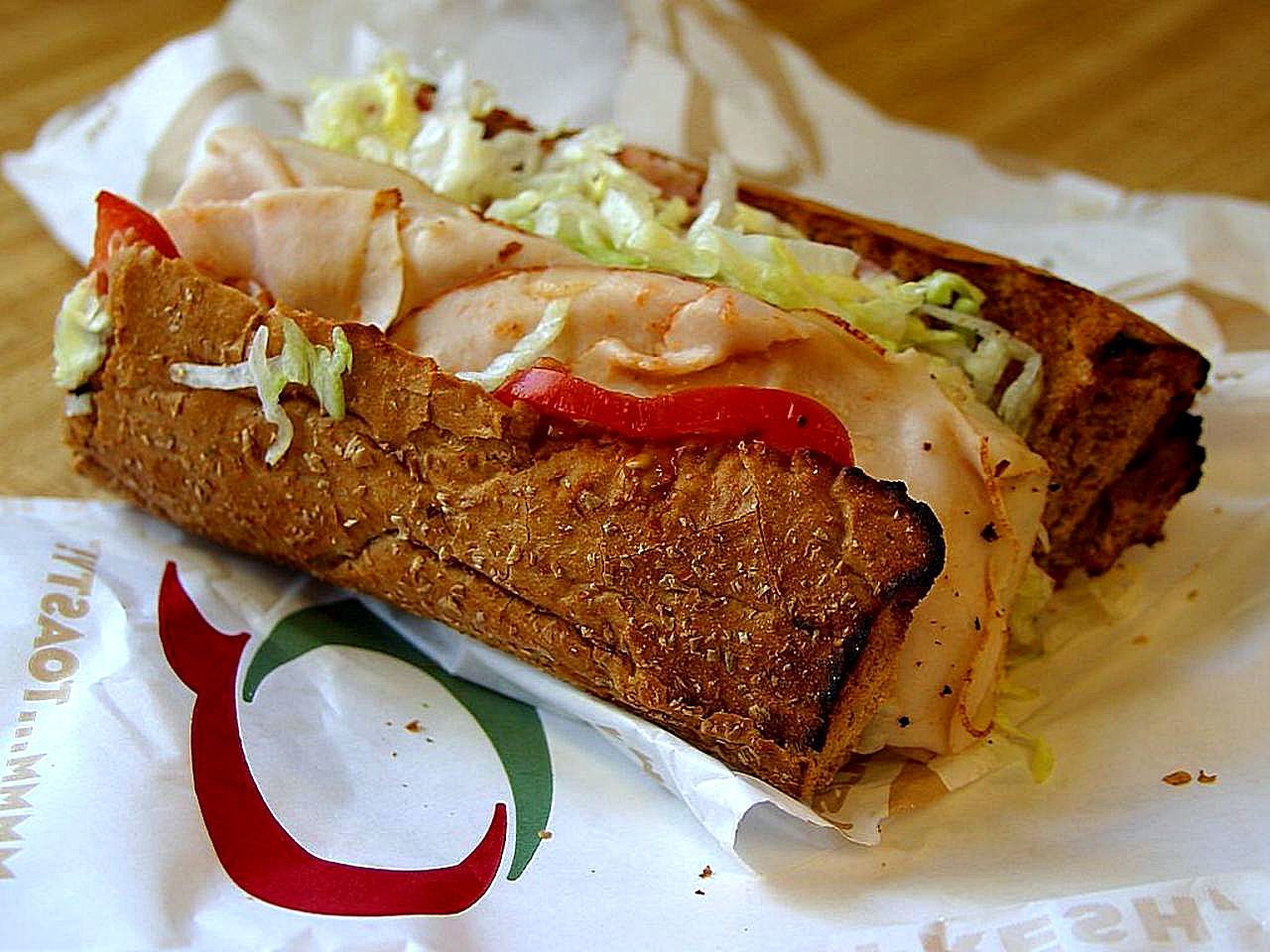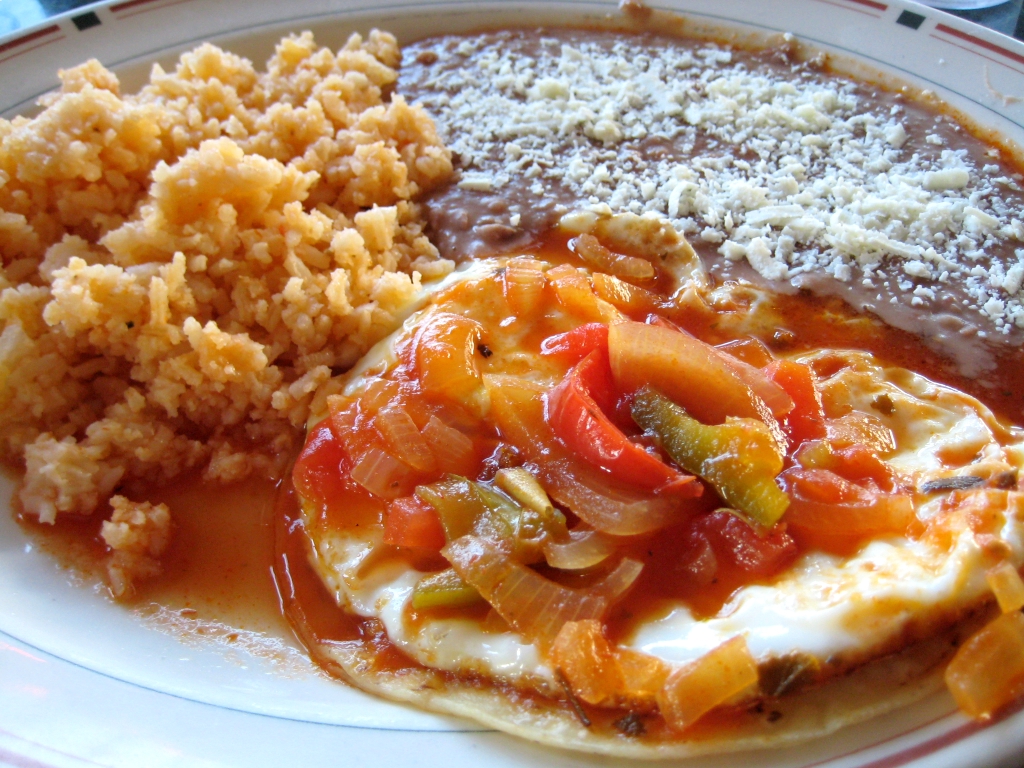|
Sincronizada
The quesadilla sincronizada (, "synchronized quesadilla") is a flour tortilla-based sandwichMaria Elena Cuervo-Lorens, (1989) «Maria Elena's Mexican Cuisine: Authentic Mexican Dishes Made Easy», pp:146 made by placing ham, vegetables (like tomatoes, onion, etc.) and a portion of Oaxaca cheese (or any type of cheese) between two flour tortillas. They are then grilled or even lightly fried until the cheese melts and the tortillas become crispy, cut into halves or wedges and served, usually with salsa and pico de gallo, avocado or guacamole on top. They are frequently confused with plain quesadillas, due to their resemblance to "quesadillas" sold in Mexico (U.S. quesadillas are usually made with flour tortillas rather than molded from masa in the Mexican style). Note however that despite the fact that it looks almost the same as a quesadilla, it is considered a separate dish. The main difference between the real quesadilla and the sincronizadas is the obligatory inclusion of ha ... [...More Info...] [...Related Items...] OR: [Wikipedia] [Google] [Baidu] |
Quesadilla
A quesadilla (; ; Mexican diminutive of ''quesada'') is a Mexican cuisine, Mexican dish consisting of a tortilla that is filled primarily with cheese, and sometimes meats, spices, and other fillings, and then cooked on a griddle or stove. Traditionally, a corn tortilla is used, but it can also be made with a flour tortilla. History The quesadilla has its origins in colonial Mexico. The quesadilla as a dish has changed and evolved over many years as people have experimented with different variations of it. Quesadillas are frequently sold at Mexican restaurant, Mexican restaurants all over the world. Types Original Mexican quesadilla In the central and southern regions of Mexico, a quesadilla is a flat circle of cooked corn masa, called a ''tortilla'', warmed to soften it enough to be folded in half, and then filled. They are typically filled with Oaxaca cheese (''queso Oaxaca''), a stringy Mexican cheese made by the ''pasta filata'' (stretched-curd) method. The quesadilla is ... [...More Info...] [...Related Items...] OR: [Wikipedia] [Google] [Baidu] |
Mexican Cuisine
Mexican cuisine consists of the cuisines and associated traditions of the modern country of Mexico. Its earliest roots lie in Mesoamerican Cuisine, Mesoamerican cuisine. Mexican cuisine's ingredients and methods arise from the area's first agricultural communities, such as those of the Olmecs, Olmec and Maya civilization, Maya, who domesticated maize, created the standard process of nixtamalization, and established foodways. Successive waves of other Mesoamerican groups brought with them their cooking methods. These included the Teotihuacanos, Toltec, Huastec civilization, Huastec, Zapotec civilization, Zapotec, Mixtec, Otomi people, Otomi, Tarascan state, Purépecha, Totonac, Mazatec, Mazahua people, Mazahua, and Nahuas, Nahua. With the Mexica formation of the multi-ethnic Triple Alliance (Aztec Empire), culinary foodways became infused (Aztec cuisine). Today's food staples native to the land include corn (maize), turkey, beans, squash, amaranth, Chia seed, chia, avocados, to ... [...More Info...] [...Related Items...] OR: [Wikipedia] [Google] [Baidu] |
Pico De Gallo
''Pico de gallo'' (; ), also called ''salsa fresca'' ('fresh sauce'), ''salsa bandera'' ('flag sauce'), and ''salsa cruda'' ('raw sauce'), is a type of salsa commonly used in Mexican cuisine. It is traditionally made from chopped tomato, onion, and serrano peppers ( jalapeños or habaneros may be used as alternatives), with salt, lime juice, and cilantro. ''Pico de gallo'' can be used in much the same way as Mexican liquid salsas. Because it contains less liquid, it also can be used as a main ingredient in dishes such as tacos and fajitas. The tomato-based variety is widely known as ''salsa picada'' (' minced/chopped sauce'). In Mexico it is normally called ''salsa mexicana'' ('Mexican sauce'). Because the colors of the red tomato, white onion, and green chili and cilantro are reminiscent of the colors of the Mexican flag, it is also called ''salsa bandera'' ('flag sauce'). In many regions of Mexico the term ''pico de gallo'' describes any of a variety of salads (includ ... [...More Info...] [...Related Items...] OR: [Wikipedia] [Google] [Baidu] |
Manchego
Manchego (, ) is a cheese made in the La Mancha region of Spain from the Sheep milk, milk of sheep of the Manchega breed. It is aged between 60 days and 2 years. Manchego has a firm and compact consistency and a buttery texture, often containing small, unevenly distributed air pockets. The colour of the cheese varies from white to ivory-yellow, and the inedible rind from yellow to brownish-beige. The cheese has a distinctive flavour, well developed but not too strong, creamy with a slight piquancy, and leaves an aftertaste that is characteristic of sheep's milk. The designation is protected under Spain's denominación de origen regulatory classification system, and the cheese has been granted Protected Geographical Status, Protected Designation of Origin (PDO) status by the European Union. PDO requirements A must satisfy these requirements: * It must be produced within designated parts of the provinces of Albacete Province, Albacete, Ciudad Real Province, Ciudad Real, Cuenca ... [...More Info...] [...Related Items...] OR: [Wikipedia] [Google] [Baidu] |
Tortilla
A tortilla (, ) is a thin, circular unleavened flatbread from Mesoamerica originally made from maize hominy meal, and now also from wheat flour. The Aztecs and other Nahuatl speakers called tortillas ''tlaxcalli'' (). First made by the indigenous peoples of Mesoamerica before colonization, tortillas are a cornerstone of Mesoamerican cuisine. Corn tortillas in Mesoamerica are known from as early as 500 BCE. Etymology The word ''tortilla'' is derived from the Spanish word ''torta'', meaning "cake," plus the diminutive -''illa''; as a result, the word means "little cake" in Spanish. Varieties Corn Tortillas made from nixtamalized maize meal (''masa de maíz'') are the oldest variety of tortilla. They originated in Mexico and Central America, and remain popular throughout the Americas. Peoples of the Oaxaca region in Mexico first made tortillas at the end of the Villa Stage (1500 to 500 BCE). Towards the end of the 19th century, the first mechanical utensils for making t ... [...More Info...] [...Related Items...] OR: [Wikipedia] [Google] [Baidu] |
List Of Sandwiches
Sandwiches are a common type of lunch food often eaten as part of a packed lunch. There are many types of sandwiches, made from a diverse variety of ingredients. The sandwich is the namesake of John Montagu, Earl of Sandwich, a British statesman. Major types of sandwiches include: * Two slices of bread with other ingredients between * Two halves of a baguette or roll with other ingredients between * Hero, hoagie, or submarine sandwich A submarine sandwich, commonly known as a sub, is a type of American cold or hot sandwich made from a submarine roll (an elongated bread roll) that is split lengthwise and filled with meats, cheeses, vegetables, and condiments. Although "subma ... * Open-faced sandwich * Pocket sandwich Sandwich cookies and ice cream sandwiches are generally not considered sandwiches in the sense of a bread-containing food item, but are named by analogy. Sandwiches See also * Hot dog variations * List of bread dishes * List of hamburgers * List ... [...More Info...] [...Related Items...] OR: [Wikipedia] [Google] [Baidu] |
List Of Mexican Dishes
The Spanish invasion of the Aztec Empire occurred in the 16th century. The basic staples since then remain native foods such as corn, beans, Cucurbita, squash and chili peppers, but the Europeans introduced many other foods, the most important of which were meat from domesticated animals, dairy products (especially cheese) and various herbs and spices, although key spices in Mexican cuisine are also native to Mesoamerica such as a large variety of chili peppers. Antojitos Street food in Mexico, called ''antojitos'', is prepared by street vendors in Mexico City, street vendors and at small traditional markets in Mexico. Most of them include corn as an ingredient. File:CemitaSandwich2.JPG, Cemita with milanesa File:Huarachesverdes.JPG, Preparation of ''huarache (food), huaraches'' File:01 Chilaquiles verdes con frijoles chinos.jpg, Chilaquiles File:Menudo in Houston TX 2013.jpg, Menudo (soup), Menudo File:Molotes.jpg, Molotes File:Cochinita pibil 2.jpg, Cochinita pibil is a traditi ... [...More Info...] [...Related Items...] OR: [Wikipedia] [Google] [Baidu] |
Gringas
Gringas (, plural and feminine form of '' gringo'') are a variety of quesadillas which consist of flour tortillas filled with cheese, al pastor meat, and pineapple. They are then grilled in the same manner as a quesadilla A quesadilla (; ; Mexican diminutive of ''quesada'') is a Mexican cuisine, Mexican dish consisting of a tortilla that is filled primarily with cheese, and sometimes meats, spices, and other fillings, and then cooked on a griddle or stove. Trad .... Some attribute the name to the use of white flour tortillas. References Mexican cuisine Tortilla-based dishes Pork dishes Mexican pork dishes {{mexico-cuisine-stub ... [...More Info...] [...Related Items...] OR: [Wikipedia] [Google] [Baidu] |
Merienda
Merienda is a light meal in southern Europe, particularly Spain (''merenda'' in Galician, ''berenar'' in Catalan), Portugal (''lanche'' or ''merenda'') and Italy (''merenda''), whence the word spread to Serbo-Croatian in, according to dictionaries, the Venetian dialectal format ''marenda'', and was popularised throughout all of former Yugoslavia as an official snack in the Yugoslav People's Army, as well as France (''goûter''), Hispanic America, the Philippines (''meryenda''/''merienda''), North Africa, and Brazil (''lanche'' or ''merenda''). Usually taken in the afternoon or for brunch, it fills in the meal gap between the noontime meal and the evening meal, being the equivalent of afternoon tea in the English-speaking world, or between breakfast and lunch. It is a simple meal that often consists of a piece of fruit, bread, biscuits, yogurt, and other snacks accompanied by fruit juice, milk, hot chocolate, coffee, spirits, or other beverages. It is typical for Argentines, P ... [...More Info...] [...Related Items...] OR: [Wikipedia] [Google] [Baidu] |
Monterey Jack
Monterey Jack, sometimes shortened to Jack, is a Californian white, semi-hard cheese made using cow's milk, with a mild flavor and slight sweetness. Originating in Monterey, on the Central Coast of California, the cheese has been called "a vestige of Spanish rule in the early nineteenth century, deriving from a Franciscan monastic style of farmer's cheese." In addition to being eaten by itself, it is frequently marbled with Colby to produce Colby-Jack, or with yellow cheddar to produce ''cheddar-Jack''. '' Pepper Jack'' is a version flavored with chili peppers and herbs. ''Dry Jack'' is a harder cheese with a longer aging time. Origins In its earliest form, Monterey Jack was made by 18th-century Franciscan friars of Monterey, Alta California. In the 19th century, various individuals contributed to the production and commercialization of this cheese. Notably, Doña Juana Cota de Boronda began making and selling ''Queso del País'' ( Spanish for "country cheese") in Mo ... [...More Info...] [...Related Items...] OR: [Wikipedia] [Google] [Baidu] |
Avocado
The avocado, alligator pear or avocado pear (''Persea americana'') is an evergreen tree in the laurel family (Lauraceae). It is native to Americas, the Americas and was first domesticated in Mesoamerica more than 5,000 years ago. It was prized for its large and unusually Avocado oil, oily fruit. The tree likely originated in the highlands bridging south-central Mexico and Guatemala. Avocado trees have a native growth range from Mexico to Costa Rica. Its fruit, sometimes also referred to as an alligator pear or avocado pear, is botanically a large Berry (botany), berry containing a single large seed. Sequencing of its genome showed that the evolution of avocados was shaped by polyploidy events and that commercial varieties have a Hybrid (biology), hybrid origin. Avocado trees are partly Self-pollination, self-pollinating, and are often Plant propagation, propagated through grafting to maintain consistent fruit output. Avocados are presently cultivated in the tropical and Medi ... [...More Info...] [...Related Items...] OR: [Wikipedia] [Google] [Baidu] |







